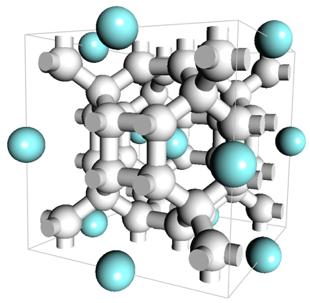
Submitted by Administrator on Fri, 13/10/2017 - 11:09
The hunt for high temperature superconductivity has been reinvigorated by the experimental discovery that compressed H2S exhibits a Tc of up to 203K at megabar pressures (1Mbar=100GPa). A collaboration between the University of Cambridge and Jilin University has published the results of a computational search for materials that might superconduct at even higher temperatures.
An extensive search for the stable structures and compositions of rare earth hydrides was performed using first principles density functional theory based methods. The superconducting transition temperatures for the stable metallic compounds were calculated using the same theoretical techniques that were used to anticipate the superconductivity in dense hydrogen sulphide. The highest temperatures were predicted for pressures that are around those found in the centre of the Earth. It is a challenge for the future to find materials that superconduct at high temperatures and everyday low pressures.
Hydrogen Clathrate Structures in Rare Earth Hydrides at High Pressures: Possible Route to Room-Temperature Superconductivity
Feng Peng, Ying Sun, Chris J. Pickard, Richard J. Needs, Qiang Wu, and Yanming Ma
Physical Review Letters, 119, 107001 – 8 September 2017 (Editors Suggestion)

